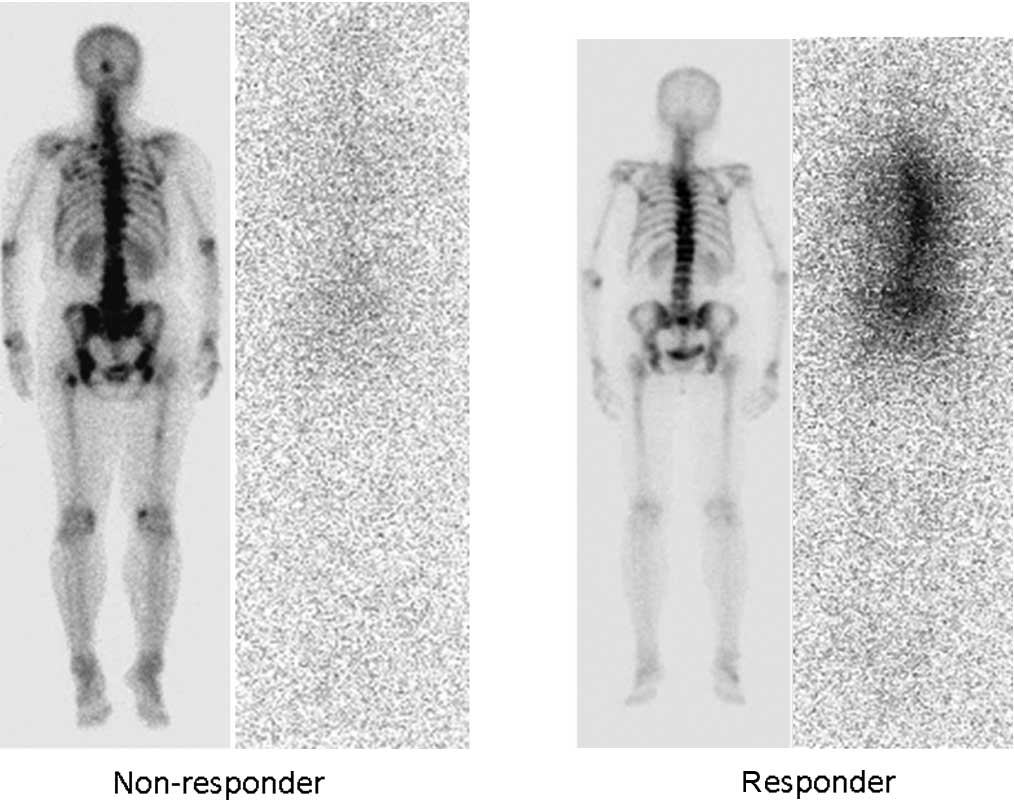Concurrent use of Sr-89 chloride with zoledronic acid is safe and effective for breast cancer patients with painful bone metastases
- Authors:
- Published online on: December 2, 2011 https://doi.org/10.3892/etm.2011.405
- Pages: 226-230
Metrics:
Total
Views: 0 (Spandidos Publications: | PMC Statistics:
)
Total PDF Downloads: 0 (Spandidos Publications: | PMC Statistics:
)
Abstract
Our aim in this study was to examine the safety and efficacy of the concurrent use of the radiopharmaceutical strontium-89 (Sr-89) chloride with zoledronic acid in standard anticancer therapy for breast cancer patients with painful multifocal bone metastases. The study comprised 16 breast cancer patients with painful multifocal bone metastases detected by bone scintigraphy, computed tomography or magnetic resonance imaging. All patients were treated with Sr-89 and zoledronic acid concurrently between March 2007 and February 2011 as part of a standard therapeutic regimen comprising chemotherapy, endocrine therapy, molecular targeting therapy and targeted radiotherapy. Sr-89 was administered intravenously at 2 MBq/kg to a maximum of 141 MBq per person. Safety was evaluated according to myelotoxicity as measured by the Common Terminology Criteria for Adverse Events (v3.0). To assess treatment efficacy, we monitored changes in analgesic drug dosages. Furthermore, bremsstrahlung imaging after the administration of Sr-89 was utilized to examine the relationship between the accumulation of Sr-89 in metastatic sites and treatment efficacy. Based on the results, a total of 14 out of 16 patients (88%) reported bone pain relief, indicating a high efficacy of Sr-89 combined with zoledronic acid. In responsive cases, a strong uptake of Sr-89 was observed on bremsstrahlung imaging at the same sites indicated by 99mTc bone scintigraphy. Moreover, severe myelosuppression (> grade 3) was not observed, and adverse events were tolerable. In conclusion, the use of Sr-89 with zoledronic acid in breast cancer patients with painful bone metastases was safe and effective when administered concurrently with other standard therapies. In the future, the treatment with Sr-89 at the early stage should be considered, and a large-scale clinical study should be conducted.











